Safety gear can often be the unsung hero of many industries, shielding workers from potential hazards and mitigating risks linked to specific tasks. Safety gloves, in particular, serve as the first line of defense for our hands - one of the most crucial and delicate parts of our human anatomy. They need to fit perfectly, not just to enable efficient work but also to provide effective protection. Choosing the perfect pair of safety gloves can feel a bit like assembling a puzzle. Factors such as size, material, and intended use all contribute to the eventual performance and comfort of the gloves. In this article, we will delve deep into the nitty-gritty of glove fitting, material selection, and industry standards to provide you with a comprehensive guide on selecting the ultimate safety gloves for your needs.
Fundamentals of Glove Sizing
Finding the perfect pair of gloves is no small feat - if they're too big, they'll interfere in performing precision tasks and the uncomfortably tight ones might obstruct blood flow. So, how do you find that perfect glove size? The key lies in understanding two critical aspects of glove sizing, your hand width and the length of your fingers.
Hand Width
Hand width, not surprisingly, refers to the breadth of your hand. To determine your correct glove size, measure around the dominant hand - the one you presumably use the most - just below the knuckles, excluding your thumb. Make sure to use a soft cloth tape measure as it adapts well to the contours of your hand providing a more accurate measurement.
Noteworthy points to remember when measuring hand width:
- Exclude your thumb from the measurement.
- Your hand should be naturally open, not clenched or stretched out.
- Use a soft cloth tape measure, for a seamless measurement.
Length of Fingers
The second vital aspect of glove sizing is the length of your fingers. This measurement is particularly essential as it determines the stretchability and comfort of the gloves. Using the same soft cloth tape measure, determine the length from the base of your hand to the tip of your longest finger.
Valuable points regarding finger length measurements:
- Measure from the base of your hand to the tip of your longest finger.
- This measurement can be crucial for those needing precision with their fingers.
By understanding, the nuances of hand width and finger length measurements, you're more likely to find the perfectly fitting gloves – because comfort shouldn't be a luxury, it's a necessity. Thus, always use these measurements as your primary criteria for glove sizing. Remember, perfectly sized gloves not only ensure comfort but also enable dexterity and tactile sensitivity, which is crucial for performing various tasks.
Dangers of Ill-fitted Gloves
Whether you're a professional mechanic, gardener, chef, or lead a medical team at a busy hospital, the right pair of gloves plays an indispensable role in your safety regime. From safeguarding against harmful substances to preventing fatigue and irritation, gloves are often the unsung heroes of the professional world. Yet, selecting a well-fitted pair isn't just about comfort, it's a matter of workplace safety as well. Shockingly, more than 70% of workers who sustained hand injuries were not actively using protective gloves, proving how vital a fitting pair of gloves can be.
Risks of Ill-fitted Gloves
Wearing ill-fitted gloves can lead to a myriad of health complications and safety hazards. One might experience:
- Hand Fatigue: Gloves that are too tight put excessive pressure on the fingers and hands, causing stiffness, aching, and fatigue. The dangers aren't confined to discomfort. Over time, prolonged hand fatigue can lead to more significant health concerns, including carpal tunnel syndrome.
- Hand Irritation: An ill-fitting glove can cause skin abrasion, discomfort, and in worst-case scenarios, lead to blisters and skin infections.
- Reduced Dexterity: A glove that's too loose or too tight may impact the wearer's ability to grip or handle objects, increasing the likelihood of accidents.
The Risk of Damaged Gloves
Equally hazardous is the risk associated with using damaged or degraded gloves. Even small holes that may not be visible to the naked eye can allow harmful substances to penetrate the glove, risking the user's health. The rules for using gloves, therefore, aren't limited to sizing. It's crucial to inspect the hand gear before every use and retire an old, frayed, or torn glove without hesitation.
Preventing Ill-Fitted Glove Dangers
To minimize these risks, regular assessments and an understanding of the user's needs are essential. A glove that fits well, is comfortable, doesn't limit dexterity, and is in good condition can drastically minimize these dangers. Remember, your gloves are more than just an accessory. They're an essential line of defense in ensuring workplace safety.
So, let's dispel the myth - gloves aren't a ‘one-size-fits-all’ solution. Making an informed glove choice isn't just a checkbox on a safety list, it's a necessity in protecting your most valuable tools – your hands.
Importance of Proper Glove Fit
When it comes to workplace safety, we often highlight the importance of hard hats, safety glasses, and protective footwear. Yet, we overlook an equally critical piece of protective equipment, our gloves. Gloves protect our hands, which are vital instruments in carrying out tasks that require precision, strength, and dexterity. But what makes a glove truly protective? The answer lies in its fit. In this section of the article, we delve into the importance of a proper glove fit.
To begin with, properly fitted gloves enhance both comfort and safety, thus playing a crucial role in improving your work performance. Ever tried to hold a pen or pick up a coin with oversized gloves? Or squeezed your hand into a pair of gloves a couple of sizes too small? Not an easy task, is it?
Well-designed gloves that fit like a second skin make it easier to handle objects and perform tasks by improving dexterity and grip. This is especially important in industries such as construction, manufacturing and healthcare where precision is paramount.
Let's discuss this in bullet points for clarity:
- Comfort: ill-fitted gloves can be a nuisance. They are uncomfortable and can slow you down. On the other hand, gloves that fit well feel pleasant and enable you to work with ease.
- Improved Dexterity: properly fitted gloves are less clumsy, allowing you to grasp and manipulate small objects easily.
- Better Grip: snug gloves offer a firm grip, reducing the probability of dropping items which can pose threats in a work environment.
- Reduced Risks: gloves that fit well can significantly reduce occupational injuries.
Another crucial aspect of glove usage is avoiding the risks associated with wearing ill-fitted gloves. These include hand irritation and fatigue, which can escalate to severe conditions such as dermatitis, allergic reactions, and carpal tunnel syndrome. Trust me, you wouldn't want to suffer from any of these blockades that could take a toll on your work and personal life.
Further, using gloves that are too large increases the risk of snagging or catching on machinery, contributing to a higher probability of workplace accidents.
The final point to note is that regular replacement of worn-out gloves is essential. Over time, gloves wear out and can lose their protective qualities. Regularly reviewing their condition and replacing them is a critical step towards ensuring continued hand protection.
Choosing well-fitted gloves and maintaining their excellent condition is not just an option, but rather an ergonomics best-practice that guarantees a safer and more productive workplace. Whether you're a seasoned industry professional or a novice, recognizing the importance of a proper glove fit can be a game-changer in your work environment.
Understanding Glove Materials
In the realm of safety gear, the importance of working gloves cannot be overstated. A lot depends on their construction - exactly what they're made from. With an array of materials at our disposal, gloves can be tailored to provide optimal safety against environmental hazards. However, as one might expect, not all gloves perform equally well under all circumstances. Two significant areas to consider when evaluating glove materials are their resistance to chemicals and their cut-resistant ratings.
Materials against Chemicals
Protection against chemicals forms a pivotal part of a glove's functionality, with different materials offering varying degrees of safeguard. For instance, natural rubber latex gloves, widely popular in healthcare sectors, offer excellent resistance against biological hazards. Contrastingly, nitrile gloves are the go-to choice when dealing with oils, greases, or certain types of acids.
It’s always advisable to refer to a chemical's Safety Data Sheet when choosing protective gloves. The sheet provides detailed information on what types of materials are resistant to the specific chemical in question. Don’t be tempted to sidestep this step. It can mean the difference between a job well done and an accidental chemical burn.
Remember, the right glove material can help boundary off hazards, while making your job significantly safer and straightforward.
Cut Resistance Ratings
Next we explore an equally critical aspect of glove materials — their resistance to cuts and slashes. When dealing with sharp objects - from construction material to glass shards - a cut-resistant glove can be a real hand-saver!
To simplify the process of selecting the right glove, ANSI (American National Standards Institute) has implemented cut resistance ratings. These ratings, typically listed on a glove's packaging, provide a clear idea of a glove's cut resistance on a scale from A1 (least resistive) to A9 (most resistive).
Leveraging these ratings, workers can make informed decisions regarding the most appropriate gloves for their particular work environment. For instance, if your work involves handling sharp metal objects, it would be wise to opt for gloves with a high ANSI cut resistance rating.
Choosing the right protective gloves doesn't have to feel like a hit-or-miss game. By understanding the materials they're made from and the level of protection they offer, you can make an educated decision every time. Dive more into the ins and outs of glove materials through our piece on Navigating the Work Glove Market.
There you have it - a quick tour through the world of glove materials, what protections they afford, and how to navigate these crucial decisions. Stay safe and remember, the right gloves make all the difference!
Industry Standards and Guidelines
The beauty of any well-vetted system lies squarely in its standards and guidelines. These set procedures not only define the modality of operation but also create an environment that fosters efficiency, effectiveness and safety. In the realm of firefighting, such structure is indispensable. A critical aspect often overlooked, yet paramount is the fitting of firefighting gloves.
If you've been well-versed in the firefighting industry, then chances are, the terms 'National Fire Protection Association' or 'NFPA' are not alien to you. Originating back in 1896, the NFPA is a celebrated American trade association that has progressively pivoted the industry towards safer and more effective firefighting techniques.
True to their vision, the NFPA recently issued updated guidelines on glove sizing that ensures the safety and convenience of firefighters specifically within the realm of structural firefighting. If this is the first time you're hearing about this, no need to worry, let's break down these new standards for you:
- Fit: First things first, a well-fitting glove is not a luxury, but a necessity. Firefighters should be measured, and re-measured to ensure their gloves have the optimal fit to aid in gripping and handling equipment. Loose or overly tight gloves not only reduce dexterity but can also pose safety threats.
- Material: Gloves should be constructed from materials that can withstand the high heat conditions of structural firefighting. The NFPA recommends gloves crafted from leather, flame-resistant material or a combination, for enhanced protection.
- Design: Structural firefighting gloves should be designed with multiple layers to help firefighters withstand the intense heat. The additional layers also provide essential cushioning for the hand.
- Testing: This should go without saying, but the guidelines emphasize undergoing regular testing after production to ensure the gloves' reliability and safety. Only gloves that have passed strenuous testing should be issued to firefighters.
"Safety doesn't happen by accident. It's a choice we make every single day. The same goes for the development and compliance to standards and guidelines. Every single choice we make, every single day." - Anthony D. Burns.
As you can see, these guidelines have been clearly thought out and are aimed at not just improving the quality of equipment firefighters use, but also their overall safety while on the job. The interplay of all these elements results in gloves that provide indispensable safety, thereby giving firefighters the confidence to brave the toughest of fires. The weight of their commitment to our safety can't be measured, and the least we can offer them is equipment that keeps them safe while they keep us safe. After all, a safe firefighter makes a safer community.
Promote adherence to these guidelines within your firefighting community. Remember, safety is not just another feature, it's a crucial aspect that every glove must have. Firefighting is not for the faint-hearted and having the right glove goes a long way in making this daunting task significantly safer.
Market Scenario of Protective Gloves
The importance of personal protective equipment, particularly protective gloves, has seen immense growth in the recent years. Amid health concerns, hazardous working environments, and industrial advancements, protective gloves serve as a line of defense. They safeguard our hands, that are pivotal for performing myriad tasks, from potential risks. This escalating demand, in turn, has had quite an impact on the market scenario of protective gloves.
According to recent data, the global market for protective gloves was valued at an impressive $25.24 billion in 2023. The sector is expected to proliferate and is estimated to grow to $38.11 billion by the end of 2024. This noteworthy expansion can be primarily attributed to the recognition of the invaluable role of these gloves in numerous industries ranging from healthcare to manufacturing, and even the food industry.
Why the dramatic surge in demand, you may ask?
There are quite a few factors contributing to this trend:
- Increasing Awareness about Workplace Safety: The emphasis on occupational safety has become a pivotal part of work culture today. This has led to a steep increase in the demand for protective gloves.
- Implementation of Regulations and Standards: Growing stringent regulations to ensure the safety of workers have also acted as a driving force in the expanding market of protective gloves.
- Rising Health Concerns: In the wake of recent pandemics, there has been a definite shift towards personal protective gear such as gloves, significantly influencing this market.
These points definitively indicate how the ring of change has sounded for the protective gloves industry, and the figure is expected to soar high. Investment in this sector is predicted to yield notable returns, thanks to the remarkable wave of demand.
Building on this scenario, it's probable that the future holds promising opportunities for the protective gloves market. Understanding this market curve will be key to leverage the upward trend and make informed decisions. It's indeed a signal towards a safer, more protection-oriented future.
Conclusion
Ultimately, choosing the right safety gloves goes beyond selecting a pair that merely fits. It entails a thorough understanding of glove sizing, grasping the implications of poorly fitted gloves, and appreciating the importance of an exact fit. Also indispensable is the knowledge of glove materials and their protective capabilities against potential hazards in your line of work. By adhering to industry standards and staying abreast with the current market scenario, you can make an informed selection that will best serve your safety needs.
While we have extensively covered safety gloves, it's essential to remember that they are part of a larger safety gear ecosystem. For instance, if you frequently use chainsaws in your work, investing in high-quality chainsaw safety pants is equally important. This is where Rain Gear Pro steps in.
We proudly manufacture one-of-a-kind chainsaw safety pants in Canada, with every stitch designed for longevity. Made to counter the notorious crotch blowout, our saw pants are reinforced with kevlar inserts, combining optimal comfort with unparalleled protection. Don't forget to explore our extensive range of work gear at Rain Gear Pro so you can fully equip yourself with quality, durable safety gear tailored for professionals like you.
Remember, when it comes to your safety, there's no room for compromise. Always choose the best.
Frequently Asked Questions
-
What factors should I consider when choosing safety gloves?
When choosing safety gloves, consider factors such as the type of hazards you will be exposed to, the level of protection required, the material of the gloves, the fit and comfort, dexterity needed, and any specific industry standards or regulations.
-
How do I determine the correct size of safety gloves?
To determine the correct size of safety gloves, measure the circumference of your dominant hand just below the knuckles. Compare the measurement to the size chart provided by the glove manufacturer to find the appropriate size.
-
What materials are commonly used for safety gloves?
Common materials used for safety gloves include latex, nitrile, neoprene, vinyl, leather, and Kevlar. Each material offers different properties such as resistance to chemicals, abrasion, punctures, and heat.
-
Are there different types of safety gloves for specific industries?
Yes, there are different types of safety gloves designed for specific industries. For example, cut-resistant gloves are common in industries like construction and manufacturing, while heat-resistant gloves are commonly used in welding and foundry work.
-
Is it important to try on safety gloves before purchasing?
Yes, it is important to try on safety gloves before purchasing to ensure proper fit and comfort. Ill-fitting gloves may reduce dexterity, cause discomfort, or compromise protection. Try different sizes and styles to find the perfect fit.



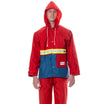
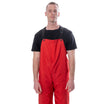
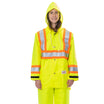
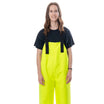
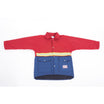
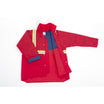

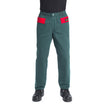
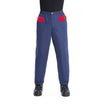
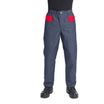
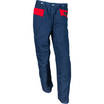
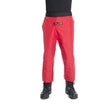
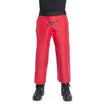
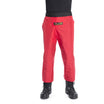
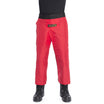



Leave a comment
This site is protected by hCaptcha and the hCaptcha Privacy Policy and Terms of Service apply.